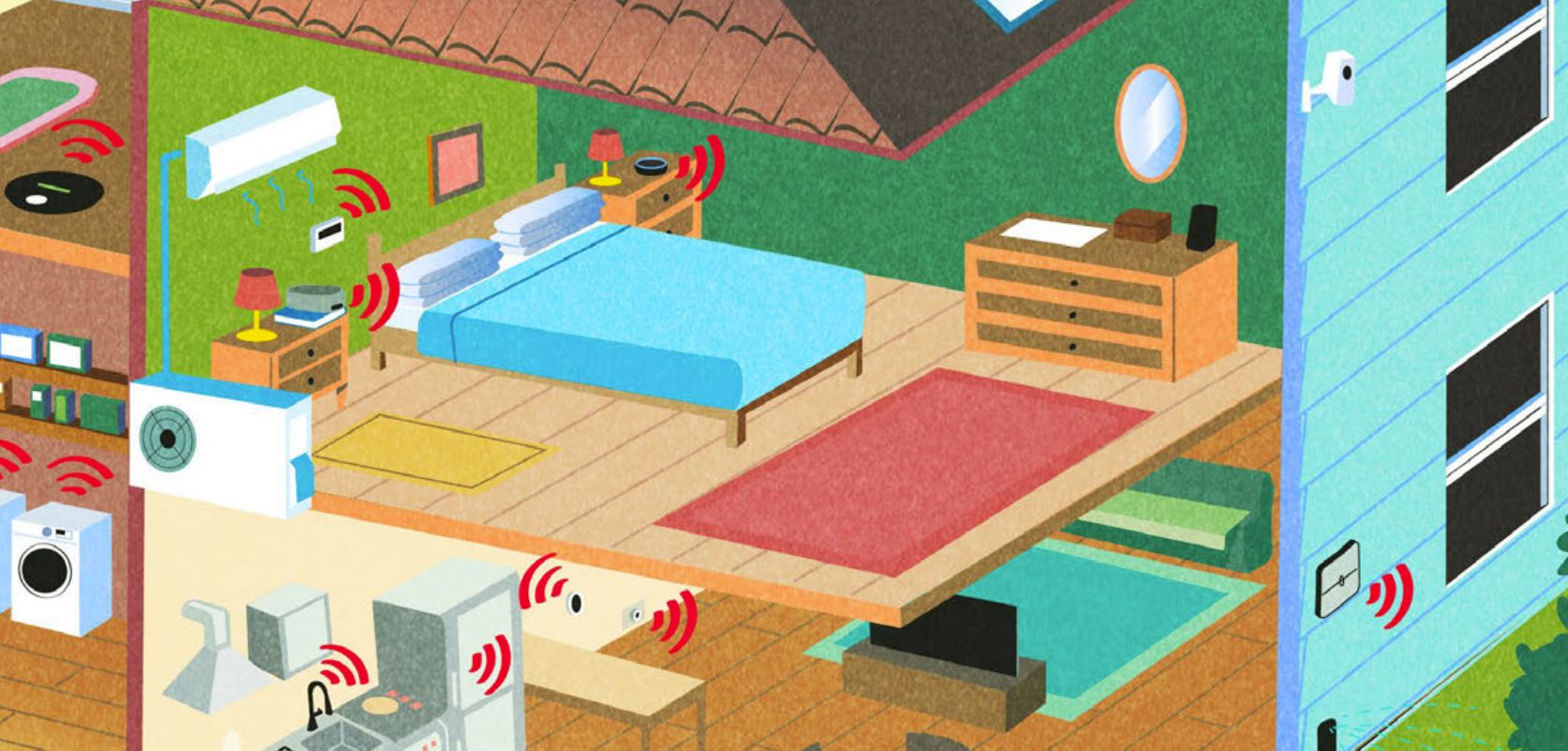Food Delivery Apps: We Compare 4 of the Biggest
These apps offer convenience but vary in costs and customer service. Here’s how Uber Eats, Grubhub, DoorDash and Postmates compare to each other.

No more screaming your order into the phone, or showing up to the restaurant in your pajamas.
On-demand food delivery service apps can eliminate the hassle of ordering takeout, while bringing fast food and fine dining right to your doorstep. But between all these big-name apps, it’s hard to distinguish which one is right for you. Stuck in the same predicament, I ranked the best food delivery services, considering each app’s hidden costs and unique benefits.
I ordered the same taco from the same restaurant, at around the same time, on four of the biggest food delivery service apps: Uber Eats, Grubhub, DoorDash and Postmates.

Sign up for Kiplinger’s Free E-Newsletters
Profit and prosper with the best of expert advice on investing, taxes, retirement, personal finance and more - straight to your e-mail.
Profit and prosper with the best of expert advice - straight to your e-mail.
Here is how each app fared.
#1: Grubhub
- Menu item: $6.50
- Sales tax: $0.63
- Delivery fee: $0
- Service fee: $1.04
- Small order fee: $2.00
- Tip: $2
- Speed: 28 minutes
- App user experience: streamlined platform allows for fast decision-making
- Customer service: accessible
Grubhub gave me the fastest, cheapest delivery. I received free delivery since it was my first order; otherwise, the app determines this fee based on the distance between the customer and the restaurant. In addition, I was charged a service fee of only 15% of my subtotal, in comparison to 50% on other apps. However, since my order’s total fell under $10, a $2 small order fee was tacked on.
You can view delivery fees for each restaurant on the app’s homepage in addition to other helpful information, such as the restaurant’s rating, cuisine type, estimated delivery window, and an icon indicating whether Grubhub+ members – who pay $9.99 a month to get free delivery on orders over $12 – get special discounts.
During the delivery process, the app lagged in tracking my order. After receiving notifications that my driver was on their way to the restaurant, the app stopped updating. Nevertheless, my Grubhub delivery arrived within 28 minutes––the fastest among all four apps.
If you encounter an issue, you can either call the customer service line or text a representative through the in-app messaging system. If the representative is not able to answer your questions, they can transfer you to another department. After experiencing the glitch, I contacted customer service, who quickly apologized and explained the malfunction that occurred.
#2: UberEats
- Menu item: $6.50
- Tax: $0.43
- Service fee: $2.50
- Delivery fee: $2.49
- Tip: $2
- Speed: 30 minutes
- App user experience: overwhelming number of functions and restaurant options
- Customer service: inaccessible
UberEats charged moderate fees without any new-customer deals. I was charged a $2.49 delivery fee, which is determined by multiple factors such as distance between you and the restaurant. Service fees are area-specific and subject to minimum and maximum mounts; in my area, the minimum service fee is $2.50. Because my order exceeded $10, I could avoid the $2 small order fee.
The app’s homepage generates endless options to choose from, including fast food, national chains, highly-rated restaurants and health food spots. As a result, the crowded interface can sometimes feel hard to navigate. Underneath each restaurant name is the delivery fee, the estimated delivery window, the in-app restaurant rating, and an icon indicating that the restaurant offers discounts exclusive to EatsPass or Postmates Unlimited members. These members pay $9.99 per month for free delivery and special discounts.
After ordering, I received notifications every step of the process. I could text or call the delivery person through the in-app system and track their movement through the in-app map. While the delivery was estimated to take 40 to 50 minutes, the order came in 30 minutes.
If you need customer support, you can press the “help” button for a specific order. You are then sent to a chat room with a chatbot. Depending on the issue, you may then be sent to an information page to further explain your circumstances and create a pending case, or you could have a text conversation with an Uber Eats representative. This automation made it difficult to get in touch with a live person.
#3: Postmates
- Menu item: $6.50
- Tax: $0.43
- Service fee: $3.00
- Delivery fee: $6.99
- Tip: $2
- Speed: 29 minutes
- App user experience: overwhelming number of functions and restaurant options
- Customer service: inaccessible
Since Uber Eats bought Postmates in July 2020, the two platforms’ interfaces have become nearly identical. The main difference is that the Postmates homepage displays categories other than restaurants since the platform delivers from other types of businesses, such as pharmacies and convenience stores.
Another major difference involves fees. My Postmates order costed significantly more than Uber Eats. My steep $6.99 delivery fee fell in the lower end of the spectrum for non-partner restaurants; delivery fees range from $0.99 to $3.99 for Partner Merchants, and $5.99 to $9.99 for all other merchants. In addition, my service fee equalled a little less than half of my subtotal. You may also get hit with a $1.99 small cart fee if your total is under a certain amount, which varies by location but ranges from $10 to $12, according to a Postmates representative. Altogether, the total cost of my order was triple the menu item.
The speed did somewhat justify the high delivery fee. My estimated delivery window ranged from 40 to 70 minutes, though my order actually came within 29 minutes.
The Postmates app user experience felt very similar to that of Uber Eats. I received notifications throughout the entire process. I could also call or text my delivery person within the app, while tracking them on the map.
Because Uber Eats and Postmates are so alike, you’ll encounter the same difficulty when trying to directly contact customer support.
#4: DoorDash
- Menu item: $6.50
- Tax: $0.43
- Delivery fee: $0
- Service fee: $3.48
- Tip: $2
- Speed: 29 minutes
- App user experience: glitch created confusion over whether order went through
- Customer service: didn’t offer clear explanations of problems or offer any compensation
DoorDash offered me great first-time customer deals and fell in the lower-price range. I enjoyed free delivery through the “first month welcome deal,” but paid a service fee a little over half of our subtotal. My order exceeded $10, the minimum total you need to avoid the $2 small order fee.
The interface is simple and functional. The homepage organizes the restaurants into different categories, including the top-rated restaurants near you, the fastest spots near you and national chains. Under each restaurant is the overall rating, the number of reviews, price level, type of cuisine, delivery fee, estimated time of arrival, and an icon indicating whether DashPass members qualify for special discounts. These members pay $9.99 per month for free delivery and reduced service fees on orders over $12, as well as discounts at partner restaurants.
However, a glitch barred me from tracking my order. After completing the order, I became locked on a blank page with the words “order processing,” which I could not exit to contact customer service or cancel the order. I did not receive confirmation that my order went through and could not track it, though I received my food.
After I selected the category my problem fell under, I had a text conversation with a representative but I ultimately spoke with four different representatives. During every round of communication, I re-explained my situation, and subsequently received the same apology without a clear explanation of what went wrong or any form of compensation.
Get Kiplinger Today newsletter — free
Profit and prosper with the best of Kiplinger's advice on investing, taxes, retirement, personal finance and much more. Delivered daily. Enter your email in the box and click Sign Me Up.
-
 Stock Market Today: Stocks Gain on Tech, Auto Tariff Talk
Stock Market Today: Stocks Gain on Tech, Auto Tariff TalkThe Trump administration said late Friday that it will temporarily halt tariffs on some Chinese tech imports.
By Karee Venema
-
 Sam's Club Plans Aggressive Expansion: Discover Its New Locations
Sam's Club Plans Aggressive Expansion: Discover Its New LocationsSam's Club expansion plans will open up to 15 new stores each year. Learn where they plan to open in 2025.
By Sean Jackson
-
 What Does Medicare Not Cover? Eight Things You Should Know
What Does Medicare Not Cover? Eight Things You Should KnowHealthy Living on a Budget Medicare Part A and Part B leave gaps in your healthcare coverage. But Medicare Advantage has problems, too.
By Donna LeValley
-
 When Renting Is Smarter Than Buying
When Renting Is Smarter Than Buyingreal estate There are some situations when renting is smarter than buying. You're not necessarily throwing your money away when you rent.
By Miriam Cross
-
 How Do You Pay off Credit Card Debt?
How Do You Pay off Credit Card Debt?Making Your Money Last Pay off credit card debt with these tried-and-true strategies.
By Ellen B. Kennedy
-
 Bear Market Strategy for Millennial Investors
Bear Market Strategy for Millennial InvestorsA focused, goal-oriented approach to investing can help millennials navigate a bear market.
By Rivan V. Stinson
-
 Rent vs. Buy: Sometimes Renting is Better
Rent vs. Buy: Sometimes Renting is BetterPersonal finance experts have long held that homeownership is a key step to building lasting wealth. How does that hold up in a pricey real estate market?
By Rivan V. Stinson
-
 Your Guide to Open Enrollment 2023
Your Guide to Open Enrollment 2023Employee Benefits Health care costs continue to climb, but subsidies will make some plans more affordable.
By Rivan V. Stinson
-
 Starting Today, Hearing Aids May be Sold Over the Counter
Starting Today, Hearing Aids May be Sold Over the CounterHealthy Living on a Budget The White House estimates people will save nearly $3,000 by not having to get them through a medical professional.
By Elaine Silvestrini
-
 The 27 Best Smart Home Devices
The 27 Best Smart Home Devicesgadgets Innovations ranging from voice-activated faucets to robotic lawn mowers can easily boost your home’s IQ—and create more free time for you.
By Daniel Bortz